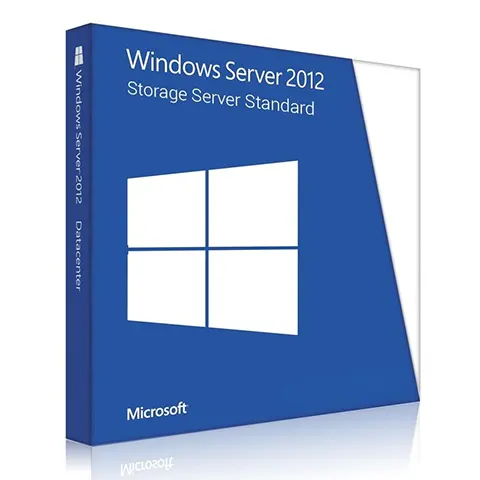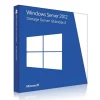Microsoft Windows Storage Server 2012 Standard
Instant Delivery via Email, product key, download links and instructions are supplied instantly upon purchase
*Downloads links are via official Microsoft site. Instructions are provided after purchase.
Windows Storage Server 2012 is an advanced storage and file serving solution for any size organization that offers new levels of performance and reliability on a proven and reliable server platform. Microsoft Windows Storage Server 2012 (WSS 2012) is a platform for network-attached storage (NAS ) appliances and iSCSI storage systems. Windows Storage Server 2012, which is built on the Windows Server 2012 operating system, offers file-based shared storage for applications such as Microsoft Hyper-V, Microsoft SQL Server and Windows Server 2012 Internet Information Services (IIS). It also includes support for the Network File System (NFS) file protocol and for a block storage option.
Windows Storage Server 2012’s is designed with cloud computing in mind and allows users to enable hybrid applications to run in private clouds, hosted public clouds, Windows Azure clouds or across premises. Tools within the product’s multi-tenant environment can help users enforce service-level agreements (SLAs) and enable usage-based chargeback.
Some key storage features in Windows Storage Server 2012 include:
- The ability to pool multiple physical hard disks.
- Enhancements to the server message block protocol (SMB protocol).
- The ability to offload data transfers from the server to external storage arrays.
- A new Resilient File System (ReFS) that improves data integrity, availability and scalability.
- The ability to manage, configure and deploy multiple virtual desktops and sessions from a single point.
- A unified interface that uses Windows Management Instrumentation (WMI) to manage physical and virtual storage, including third-party external storage subsystems.
- Support for just-in-time allocations (also referred to as thin provisioning).
- The ability to reduce primary data storage footprint requirements on NTFS data volumes


